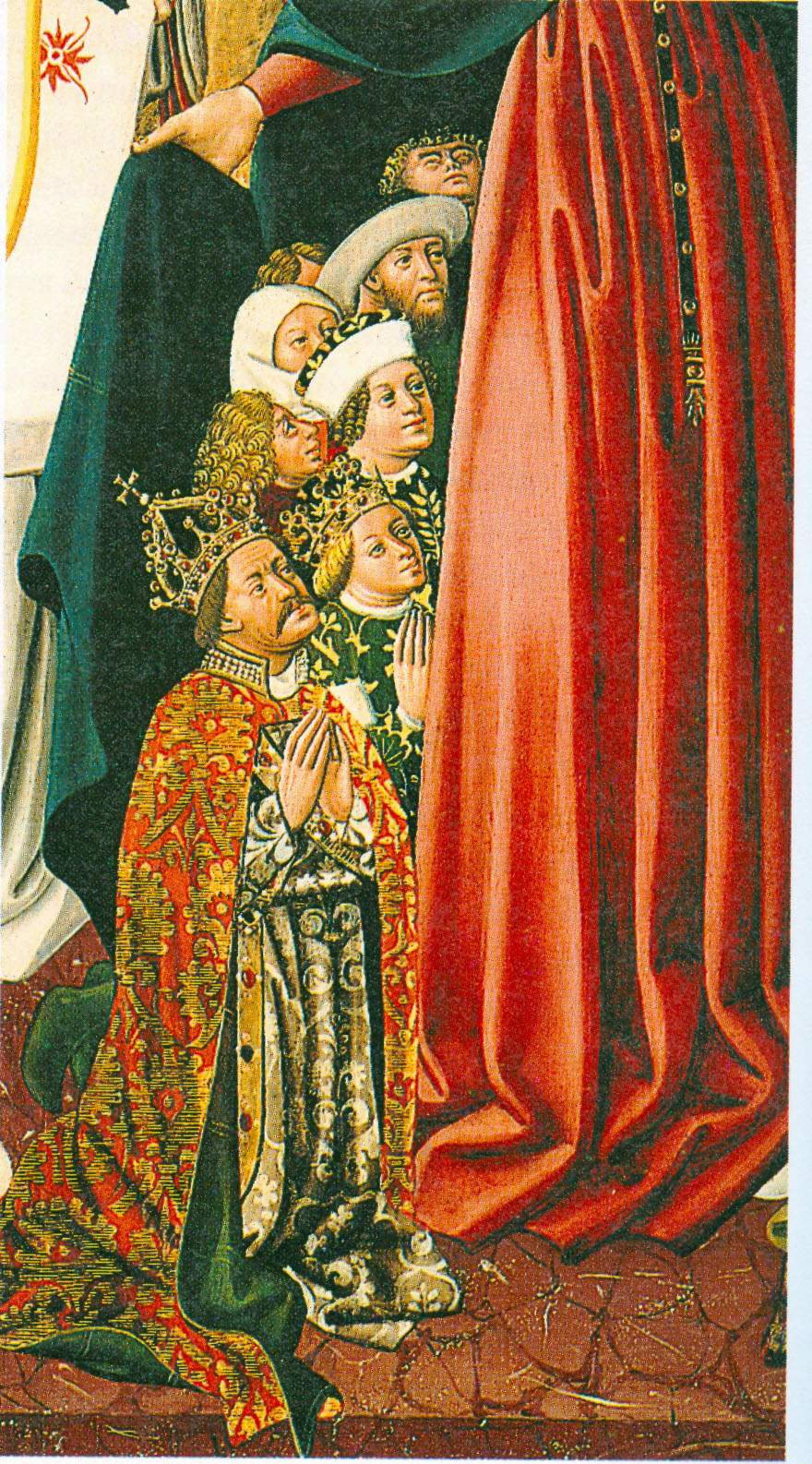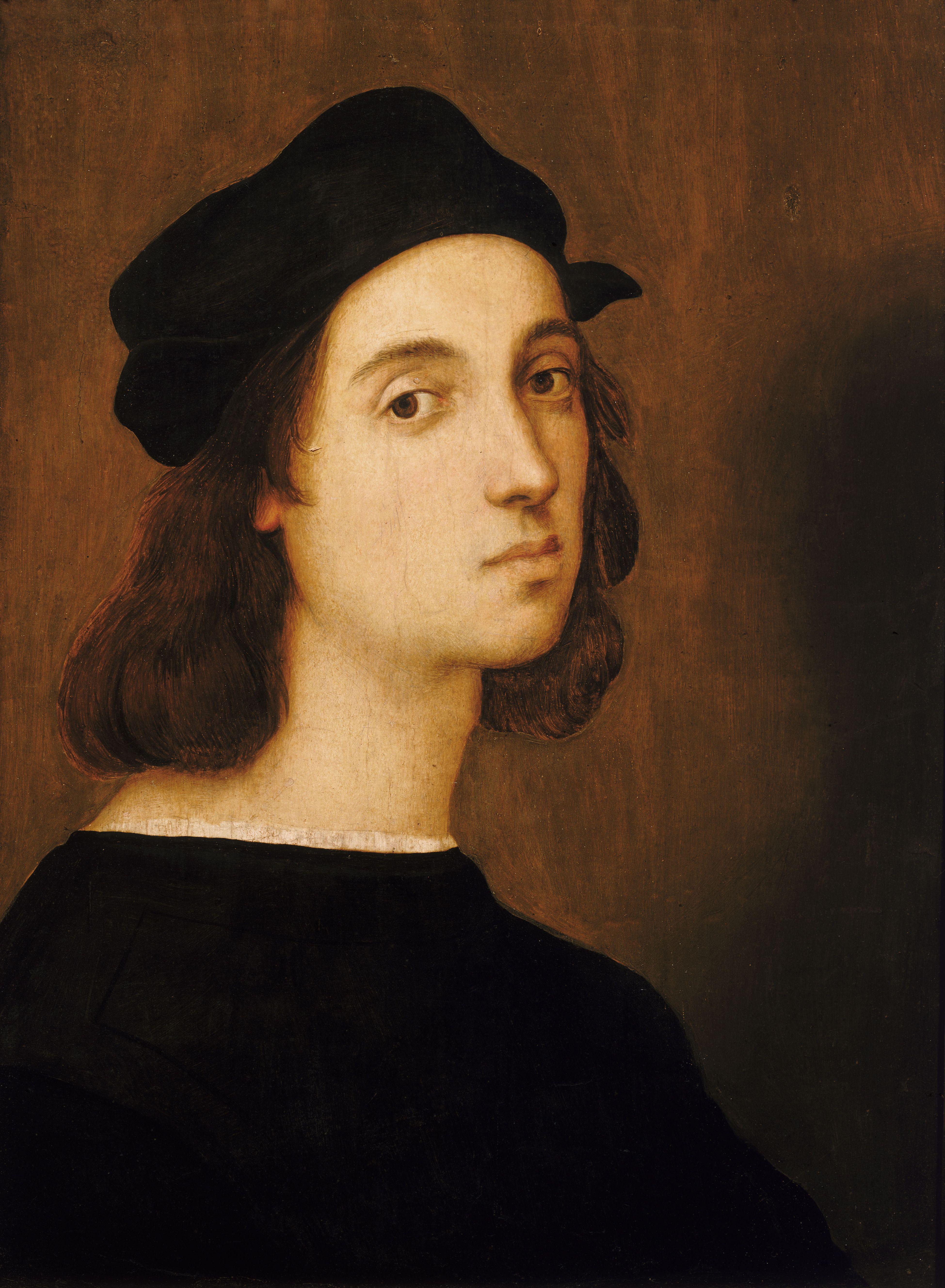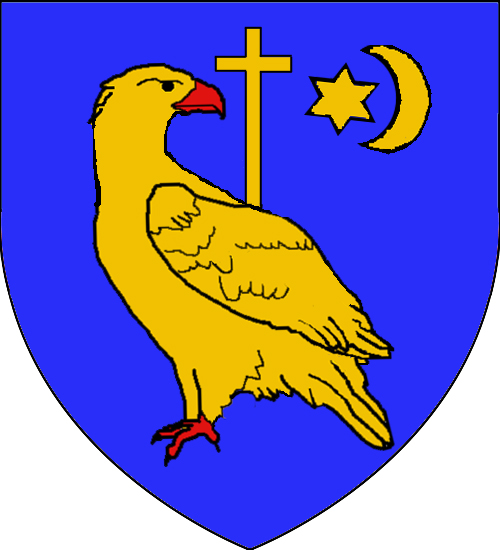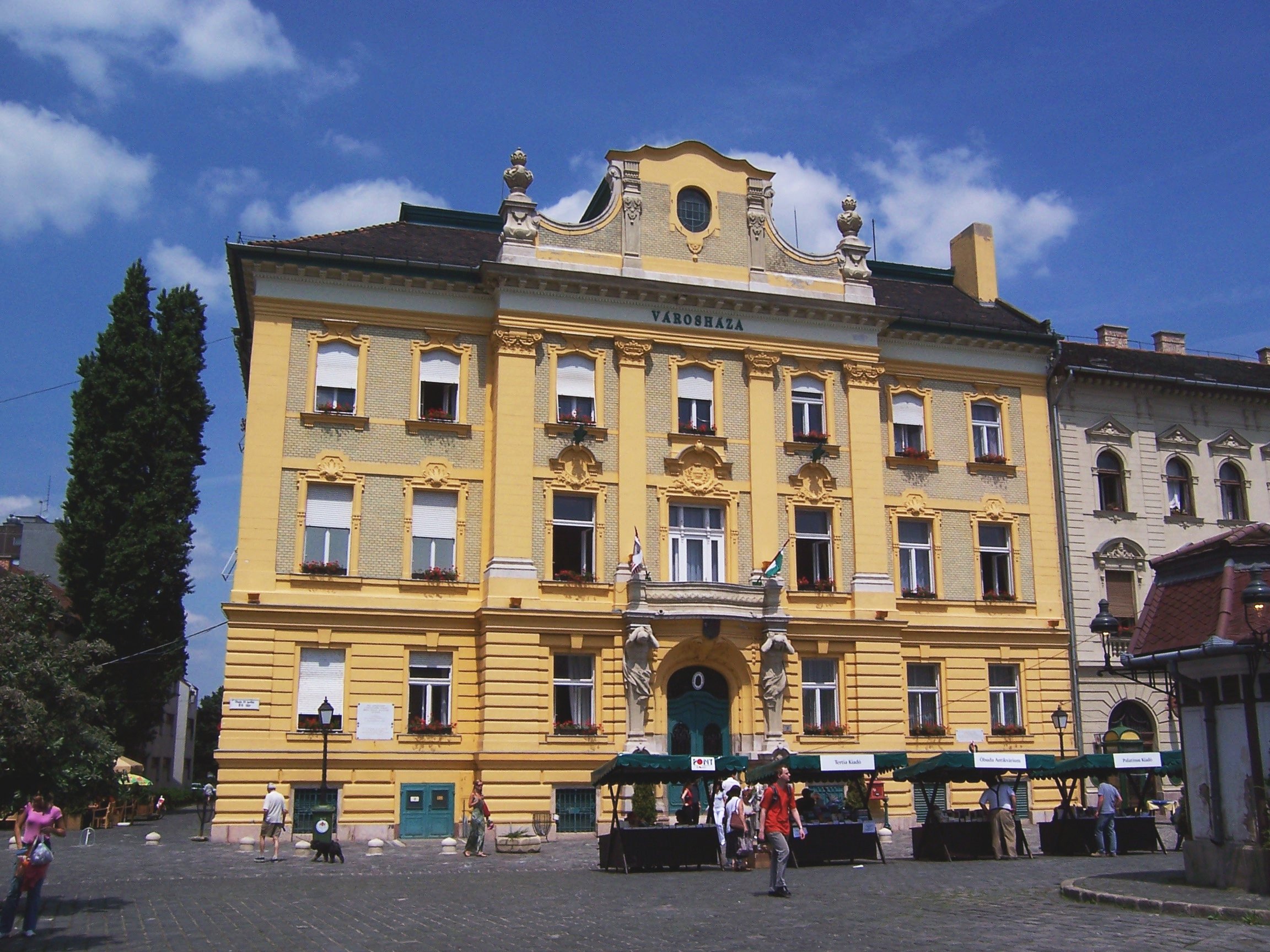|
Elizabeth Szilágyi
Erzsébet Szilágyi ( hu, Szilágyi Erzsébet, c. 1410–1483) was a Hungarian noblewoman, wife of John Hunyadi and mother of Matthias Corvinus, King of Hungary. Elizabeth was the daughter of the Ladislaus Szilágyi and Catherine Bellyéni, members of two influential Hungarian families of the 15th century that were loyal to the King Sigismund of Hungary. She had several siblings, including Mihály Szilágyi, who had an important role after the death of Elizabeth's husband, John Hunyadi. Hunyadi was the regent of the Kingdom of Hungary and supreme commander of the armies, an excellent fighter, that counted with the favor of the Pope for confronting the Ottoman Empire. He was the most powerful nobleman of the Kingdom and counted with huge properties and centenars of lower noblemen that supported him. After his death in 1456, his older son Ladislaus Hunyadi became the head of the House of Hunyadi, however after murdering the count Ulrich von Cilli, the counselor of the King L ... [...More Info...] [...Related Items...] OR: [Wikipedia] [Google] [Baidu] |
Matthias Corvinus
Matthias Corvinus, also called Matthias I ( hu, Hunyadi Mátyás, ro, Matia/Matei Corvin, hr, Matija/Matijaš Korvin, sk, Matej Korvín, cz, Matyáš Korvín; ), was King of Hungary and Croatia from 1458 to 1490. After conducting several military campaigns, he was elected King of Bohemia in 1469 and adopted the title Duke of Austria in 1487. He was the son of John Hunyadi, Regent of Hungary, who died in 1456. In 1457, Matthias was imprisoned along with his older brother, Ladislaus Hunyadi, on the orders of King Ladislaus the Posthumous. Ladislaus Hunyadi was executed, causing a rebellion that forced King Ladislaus to flee Hungary. After the King died unexpectedly, Matthias's uncle Michael Szilágyi persuaded the Estates to unanimously proclaim the 14-year-old Matthias as king on 24 January 1458. He began his rule under his uncle's guardianship, but he took effective control of government within two weeks. As king, Matthias waged wars against the Czech mercenaries who domina ... [...More Info...] [...Related Items...] OR: [Wikipedia] [Google] [Baidu] |
Ladislaus V
Ladislaus the Posthumous( hu, Utószülött László; hr, Ladislav Posmrtni; cs, Ladislav Pohrobek; german: link=no, Ladislaus Postumus; 22 February 144023 November 1457) was Duke of Austria and King of Hungary, Croatia and Bohemia. He was the posthumous son of Albert of Habsburg with Elizabeth of Luxembourg. Albert had bequeathed all his realms to his future son on his deathbed, but only the estates of Austria accepted his last will. Fearing an Ottoman invasion, the majority of the Hungarian lords and prelates offered the crown to Vladislaus III of Poland. The Hussite noblemen and towns of Bohemia did not acknowledge the hereditary right of Albert's descendants to the throne, but also did not elect a new king. After Ladislaus's birth, his mother seized the Holy Crown of Hungary and had Ladislausknown as Ladislaus V in Hungarycrowned king in Székesfehérvár on 15 May 1440. However, the Diet of Hungary declared Ladislaus's coronation invalid and elected Vladislaus king. A c ... [...More Info...] [...Related Items...] OR: [Wikipedia] [Google] [Baidu] |
1483 Deaths
Year 1483 ( MCDLXXXIII) was a common year starting on Wednesday (link will display the full calendar) of the Julian calendar. Events January–December * January 1 – The Jews are expelled from Andalusia. * February 11 – The ''General Council of the Inquisition'' is created in Spain. * April 9 – Edward V becomes King of England. * April 29 – Gran Canaria, the main island of the Canary Islands, is conquered by the Kingdom of Castile, a very important step in the expansion of Spain. * April 30 – Pluto moves inside Neptune's orbit until July 23, 1503, according to modern orbital calculations. * April – King Edward V of England and his younger brother Richard, Duke of York reside in the Tower of London. Later this year, rumors of their murders start circulating. By December the rumors have reached France. This is the beginning of the mystery concerning the fates of the two Princes in the Tower. * June 13 – William Hastings, 1st Baro ... [...More Info...] [...Related Items...] OR: [Wikipedia] [Google] [Baidu] |
1410 Births , a year of the pre-Julian Roman calendar
{{numberdis ...
141 may refer to: * 141 (number), an integer * AD 141, a year of the Julian calendar * 141 BC __NOTOC__ Year 141 BC was a year of the pre-Julian Roman calendar. At the time it was known as the Year of the Consulship of Caepio and Pompeius (or, less frequently, year 613 '' Ab urbe condita''). The denomination 141 BC for this year has been ... [...More Info...] [...Related Items...] OR: [Wikipedia] [Google] [Baidu] |
Szilágyi Family
The Szilágyi of Horogszeg ( hu, horogszegi Szilágyi) was an important Hungarian noble family of the Kingdom of Hungary and of Transylvania. History The Szilágyi family comes from the region of the Szilágy-patak (present-day Sălaj River, part of Romania). File:Familia nobila Silaghi (1).jpg, Szilágyi Coat of Arms File:Familia nobila Silaghi (2).jpg, Szilágyi Coat of Arms File:Coa Hungary Family Szilágyi (Horogszeg).svg, Coat of Arms of Szilágyi Family Most specialist agree that the family died out in the Middle Ages.A Zürichi Magyar Történelmi Egyesület kiadványa, A Zürichi Magyar Történelmi Egyesület Ötödik Magyar Őstörténeti Találkozó Előadásai és Iratai', Budapest – Zürich, 2005, p. 179, Zoltán W. Vityi says that the noble Szilágyis of Horogszeg who lived in Nyírgelse and Nyírmihálydi (in Szabolcs County in Hungary) in the 1930s were descended from the medieval noble family. Notable members * Ladislaus Szilágyi (15th century) of H ... [...More Info...] [...Related Items...] OR: [Wikipedia] [Google] [Baidu] |
Count Of The Székelys
The Count of the Székelys ( hu, székelyispán, la, comes Sicolorum) was the leader of the Hungarian-speaking Székelys in Transylvania, in the medieval Kingdom of Hungary. First mentioned in royal charters of the 13th century, the counts were the highest-ranking royal officials in Székely Land. From around 1320 to the second half of the 15th century, the counts' jurisdiction included four Transylvanian Saxon districts, in addition to the seven Székely seats (or administrative units). The counts also held important castles outside the territories under their administration, including their seat at Görgény (now Gurghiu in Romania). They were the supreme commanders of the Székely troops; their military campaigns against Bulgaria and the Golden Horde were mentioned in royal charters and medieval chronicles. The counts presided over the general assemblies of both the individual Székely seats and the entire Székely community. They also heard appeals of the decisions of the ... [...More Info...] [...Related Items...] OR: [Wikipedia] [Google] [Baidu] |
Ban Of Severin
The Banate of Severin or Banate of Szörény ( hu, Szörényi bánság; ro, Banatul Severinului; la, Banatus Zewrinensis; bg, Северинско банство, ; sr, Северинска бановина, ) was a Hungarian political, military and administrative unit with a special role in the initially anti-Bulgarian, latterly anti- Ottoman defensive system of the medieval Kingdom of Hungary. It was founded by Prince Béla in 1228. Territory The Banate of Severin was a march (or a border province) of the medieval Kingdom of Hungary between the Lower Danube and the Olt River (in present-day Oltenia in Romania). A charter of grant, issued on 2 June 1247 to the Knights Hospitallers, mentioned the Olt as its eastern border. The Knights received the "Land of Severin" ''(Terra de Zeurino)'', along with the nearby mountains, from Béla IV of Hungary. The king had described the same region as a "deserted and depopulated" land in a letter to Pope Gregory IX on 7 June 1238. Moder ... [...More Info...] [...Related Items...] OR: [Wikipedia] [Google] [Baidu] |
Voivode Of Transylvania
The Voivode of Transylvania (german: Vojwode von Siebenbürgen;Fallenbüchl 1988, p. 77. hu, erdélyi vajda;Zsoldos 2011, p. 36. la, voivoda Transsylvaniae; ro, voievodul Transilvaniei) was the highest-ranking official in Transylvania within the Kingdom of Hungary from the 12th century to the 16th century. Appointed by the monarchs, the voivodesthemselves also the heads or ''ispáns'' of Fehér Countywere the superiors of the ''ispáns'' of all the other counties in the province. They had wide-ranging administrative, military and judicial powers, but their jurisdiction never covered the whole province. The Saxon and Székely communitiesorganized into their own districts or "seats" from the 13th centurywere independent of the voivodes. The kings also exempted some Transylvanian towns and villages from their authority over the centuries. Even so, the Voivodeship of Transylvania "was the largest single administrative entity"Jefferson 2012, p. 142. in the enti ... [...More Info...] [...Related Items...] OR: [Wikipedia] [Google] [Baidu] |
Elizabeth Of Luxembourg
Elizabeth of Luxembourg ( hu, Luxemburgi Erzsébet; 7 October 1409 – 19 December 1442) was queen consort of Hungary, queen consort of Germany and Bohemia. The only child of Holy Roman Emperor Sigismund, King of Hungary and Bohemia, Elizabeth was expected to ascend his thrones along with her husband, Albert of Austria. After her father's death, Elizabeth and her husband were elected by the Hungarian estates as de facto equal rulers. She could not completely assert her position though, because the Veszprém bishop refused to give up on his right to crown the queen (the monarch was traditionally crowned by the Esztergom bishop). She was however recognized as co-ruler and played an active part in the government. After Albert's death though, she was unable to prevent the election of a new king. Albert died in 1439, leaving Elizabeth a pregnant dowager with two daughters, Anne and Elizabeth. Bohemian nobility proclaimed an ''interregnum'', while King Vladislaus III of Poland ... [...More Info...] [...Related Items...] OR: [Wikipedia] [Google] [Baidu] |
Óbuda
Óbuda was a town in Hungary that was merged with Buda and Pest on 17 November 1873; it now forms part of District III-Óbuda-Békásmegyer of Budapest. The name means ''Old Buda'' in Hungarian (in German, ''Alt-Ofen''). The name in Bosnian, Croatian and Serbian for this city is ''Stari Budim'', but the local Croat minority calls it ''Obuda'' (the name "Budim" is used for the fortress in Buda). In Czech it is called ''Starý Budín''. The island (Óbuda Island) next to this part of the city today hosts the Sziget Festival, a huge music and cultural festival. Óbuda's centre is ''Fő tér'' (Main Square), connected to a small square with a sculpture of people waiting for the rain to stop. It is accessible by HÉV (''Szentlélek tér'' station). History Settlements dating from the Stone Age have been found in Óbuda. The Romans built there Aquincum, the capital of Pannonia province. Hungarians arrived after 900 and it served as an important settlement of major tribal leader ... [...More Info...] [...Related Items...] OR: [Wikipedia] [Google] [Baidu] |
John Corvinus
John Corvinus ( Hungarian: ''Corvin János'', Croatian: ''Ivaniš Korvin'', Romanian: ''Ioan Corvin''; 2 April 1473 – 12 October 1504) was the illegitimate son of Matthias Corvinus, King of Hungary, and his mistress, Barbara Edelpöck. Biography Early life Born in Buda, he took his name from the raven (Latin: ''corvus'') in his father's escutcheon. Matthias originally intended him for the Church, but on losing all hope of offspring from his queen, Beatrice of Naples, determined, towards the end of his life, to make the youth his successor on the throne. He loaded him with honours and riches until he was by far the wealthiest magnate in the land. He publicly declared him his successor, created him a prince with vast apanages in Silesia (Duchy of Głogów) made the commandants of all the fortresses in the kingdom take an oath of allegiance to him, and tried to arrange a marriage for him with Bianca Maria Sforza of Milan, a project which was frustrated by the intrigues of Queen ... [...More Info...] [...Related Items...] OR: [Wikipedia] [Google] [Baidu] |
Antal Mojzeš
{{Disambiguation ...
Antal may refer to: * Andal, 8th-century poet saint of South India * Antal (given name) * Antal (surname) * 6717 Antal, a minor planet See also * Andal (other) Andal was a poet-saint of South India. Andal may also refer to: * Andal, Paschim Bardhaman, a census town in West Bengal, India ** Andal (community development block), an administrative division * Andal (crater), a crater on Mercury * Andals, a f ... [...More Info...] [...Related Items...] OR: [Wikipedia] [Google] [Baidu] |







